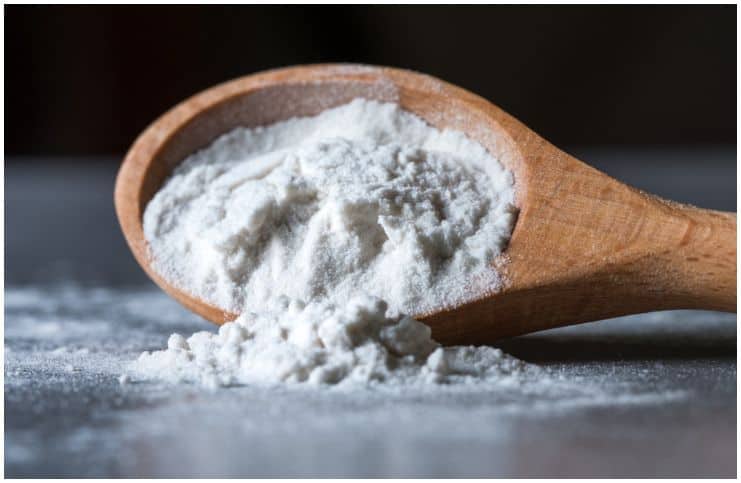Sodium Citrate Side Effects:
Sodium citrate, also known as citric acid, is a food additive approved by the FDA and EU (under the name of E331). Large and natural concentrations are found in grapes, kiwis, oranges, strawberries, tangerines, lemons, and many other fruits.
It is used as an antioxidant, preservative, and food additive for flavor while improving the quality and stability of some foods. It produces a sour taste, dissolves easily, and acts instantaneously.
Is this food preservative vegan?
For commercial uses, this substance is made from the fermentation of molasses (a by-product of sugar production) mixed with a fungus – Aspergillus niger, which in large quantities, is harmful to both animals and humans. Therefore, this substance can normally be consumed by vegans.
Uses of E331
This compound is used as an acidity regulator in drinks and food, hence it allows spherification (a culinary process that consists of submerging a liquid with sodium alginate in a bath of calcium) with strongly acidic ingredients, and also as an emulsifier for oils.
Citric acid is also used as a medication to make the urine less acidic. When the urine becomes acidic, uric acid stones may form in the kidneys.
Risk factors that may increase the acidity of urine include diarrhea, starvation, and uncontrolled diabetes. Furthermore, less acidic urine helps prevent gout, a form of inflammatory arthritis.
It is also used to control inflammation in the bladder caused by infection of the urine (commonly occurs when bacteria outside the body enter the urinary tract through the urethra and begin to multiply), particularly in women. Moreover, it is used as an antioxidant in food as well as a sequestrant.
Cheese
Furthermore, it is used as an emulsifier to make smooth and melty cheese (without becoming greasy) but with the particular flavor of aged cheese. In addition, it is used as a laxative to manage and prevent constipation.
However, as a side note, preventing and managing constipation can be better achieved with optimal fiber intake. Men should aim for 38 grams of fiber per day, and women should aim for 25 grams of fiber per day – minimum.
Lastly, in some surgical operations, it prevents inhalations of stomach acid to the airways.
Citric Acid (Sodium Citrate) side effects and precautions
It does not cause allergic reactions in people who are allergic to citrus fruits. However, a frequent side effect of E331 is alkalosis which occurs when your body has too many bases due to higher blood levels of bicarbonate or due to lower blood levels of carbon dioxide. It can also cause tooth erosion.
Pregnancy
Stop using this substance if your kidneys do not work well, you are pregnant, you have a heart condition, or you have any of these side effects:
- muscle twitching or pain, leg cramps or pain;
- tingling, swelling, or numbness in your feet or hands;
- unusual weakness, shallow and rapid breathing, slow or fast heart rate, confusion, dizziness, or mood changes;
- seizure (convulsions);
- feeling nervous, restless, or irritable;
- bloody, black, or tarry stools;
- severe diarrhea.
Moreover, do not use this substance if you have untreated Addison disease (which occurs when the adrenal glands do not produce enough steroid hormones), aluminum toxicity, low or no urine production, high blood potassium, or if you are dehydrated.
Drug Interactions
If you are taking or using any medicines based on a medical prescription or a herbal supplement, consult a health care specialist before using this compound.
Additionally, this substance reduces stomach acidity, which can lead to a lower absorption rate and may decrease the effectiveness of some drugs, such as –
- atazanavir (an antiretroviral medication that is used to treat and prevent HIV/AIDS);
- indinavir (Crixivan);
- ritonavir (Norvir);
- moxifloxacin (an antibiotic that is used to treat a number of bacterial infections);
- ciprofloxacin (Cipro);
- tetracycline (Tetracon);
- doxycycline (Vibramycin);
- ketoconazole (a medication that is used to treat fungal infections);
- itraconazole (Sporanox).
The following drugs can interact with E331:
- methenamine (a heterocyclic organic compound);
- lithium (a pharmaceutical agent which acts as a class I antiarrhythmic agent);
- quinidine (Quinidex, Quinaglute);
- a supplement that contains calcium, allergy or cold drugs (decongestants);
- ADHD medication;
- diet pills;
- an antacid that contains aluminum or sodium, or salicylates, such as aspirin;
- Novasal (used to relieve pain from various conditions);
- Backache Relief Extra Strength;
- Doan’s Pills Extra Strength (a nonsteroidal anti-inflammatory drug);
- Tricosal (a medication used to ease pain and fever).
READ THIS NEXT:
Sodium Stearoyl Lactylate (E481) – Uses and Adverse Effects
Casomorphin and Addiction to Cheese?
E337 – Potassium Sodium Tartrate: Uses and Side Effects
Reference https://www.sciencedirect.com/science/article/pii/S0022072873804413 http://jpet.aspetjournals.org/content/20/6/481 https://www.ncbi.nlm.nih.gov/pubmed/24982071
